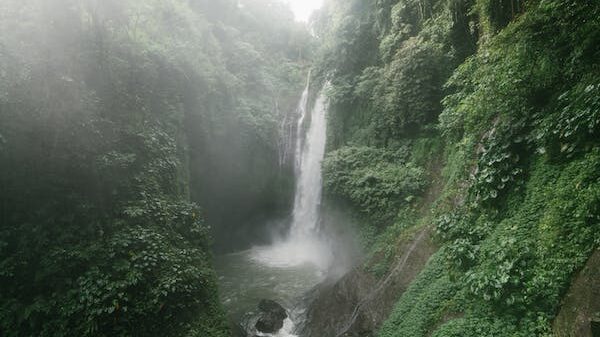Step aboard our virtual submarine and let’s dive into the mysterious depths of the ocean, where a world of hidden wonders awaits us. Beneath the waves lies an incredible realm of marine life that is both mesmerizing and awe-inspiring. From glittering schools of fish to towering coral reefs, there’s no limit to what we might discover on this journey through the underwater wonderland. So join us as we explore some of nature’s most captivating creations in “Exploring the Hidden Wonders of Marine Life: A Journey Beneath the Waves.”
Introduction to Marine Life and its Benefits
Few people have the opportunity to explore the hidden wonders of marine life. For most of us, the underwater world is a mystery, and we only get to experience it through television programs or movies. Marine life is fascinating and has many benefits for us.
One benefit of marine life is that it helps to keep our oceans clean. Marine animals play an important role in the food chain and help to keep the ocean ecosystem in balance. They also provide a source of food for humans and help to regulate the climate.
Another benefit of marine life is that it can be used for medical purposes. Some marine animals have unique properties that can be used to develop new medicines. For example, a substance called bryostatin 1, which is found in a type of sea sponge, has shown promise in treating cancer.
There are many other benefits of marine life that we are just beginning to discover. As we learn more about these amazing creatures, we will be able to find even more ways to improve our lives.
Overview of Different Marine Ecosystems
There are a variety of different marine ecosystems that can be found beneath the waves. These include coral reefs, kelp forests, seagrass beds, and more. Each of these ecosystems is home to a unique array of marine life.
Coral reefs are perhaps the most well-known marine ecosystem. They are formed by colonies of coral polyps that secrete a hard calcium carbonate skeleton. Coral reefs provide a home for many different species of fish, invertebrates, and other animals.
Kelp forests are another type of marine ecosystem. They are composed of large brown algae that grow in deep, cool waters. Kelp forests provide shelter and food for many different types of animals, including fish, crabs, and sea urchins.
Seagrass beds are another important marine ecosystem. Seagrasses are flowering plants that grow in shallow waters along coastlines. Seagrass beds provide habitat for many different species of fish and invertebrates.
Fascinating Marine Creatures Around the World
There are a multitude of interesting and bizarre creatures that live in the world’s oceans, from the giant blue whale to the tinybut deadly box jellyfish. Marine life is often hidden from our view, making it all the more fascinating when we discover new species or learn more about the ones we already know.
Some of the most popular marine creatures include dolphins, sharks, and sea turtles. These animals are often seen as symbols of strength, power, and grace. Dolphins in particular have been known to display impressive intelligence and social behavior.
Another fascinating group of marine creatures are octopuses. These eight-armed mollusks are known for their ability to change their appearance to blend in with their surroundings. Octopuses are also capable of using tools, which is a rare trait among animals.
Then there are the truly weird and wonderful creatures that inhabit the deep sea. These include anglerfish with their strange “lures”, blobfish that look like they’re made of slime, and vampire squid with their eerie red eyes. Marine life never fails to surprise us!
The Deep Sea: Exploring Its Hidden Wonders
The deep sea is one of the largest and most unexplored habitats on Earth. Covering over two-thirds of the planet’s surface, the deep sea is home to a vast array of unique and fascinating creatures.
Despite its immense size, the deep sea remains largely unknown to science. In fact, we have explored less than 5% of the ocean’s depths. This is largely due to the extreme conditions found in the deep sea, which make it difficult and expensive to explore.
Despite these challenges, scientists have made great strides in understanding this mysterious environment. Thanks to advances in technology, we are now able to study the deep sea in ways that were not possible before. For example, we can use remotely operated vehicles (ROVs) to explore the seafloor and collect samples and data without putting humans at risk.
As we continue to explore the deep sea, we are sure to uncover even more amazing creatures and secrets about this vast and fascinating ecosystem.
Threats to Marine Life and Conservation Efforts
The ocean is a vast and largely unexplored place, home to an incredible variety of marine life. Unfortunately, this fragile ecosystem is under threat from a number of human activities.
Overfishing is perhaps the most serious threat to marine life. As we continue to deplete fish stocks, we are putting immense pressure on the remaining populations. This can lead to a collapse of the entire ecosystem, as happened in the North Atlantic in the 1990s.
Pollution is another major threat to marine life. Oil spills, chemical dumping, and other forms of pollution can have devastating effects on marine species and their habitats. In some cases, pollution can even cause species to go extinct.
Climate change is also having a major impact on the oceans. Rising temperatures and ocean acidification are causing widespread coral bleaching and stressing marine life. These changes are likely to have far-reaching consequences for the ocean ecosystem as a whole.
Fortunately, there are many conservation efforts underway to protect marine life from these threats. Marine parks and reserves are being established around the world, and laws are being enacted to regulate fishing and polluting activities. With continued effort, we can ensure that the hidden wonders of marine life will be around for generations to come.
Marine Life;Tips for Responsible Scuba Diving and Snorkeling
When venturing into the world beneath the waves, it is important to be a responsible scuba diver or snorkeler. Here are some tips to help you enjoy your underwater adventure while protecting the marine environment:
• Get trained and certified. Before scuba diving or snorkeling in unfamiliar waters, make sure you are properly trained and have the necessary certification. This will not only ensure your safety but also help you to be a more environmentally responsible diver.
• Be prepared. Before diving, check local weather conditions and water conditions to ensure that it is safe to dive. Make sure you have all the necessary gear and equipment, and that it is in good working condition.
• Be aware of your impact. When diving or snorkeling, be aware of your surroundings and avoid touching or disturbing corals and other marine life. Remember that even small actions can have a big impact on delicate underwater ecosystems.
• Be respectful. Some areas may be off-limits to divers or snorkelers due to environmental concerns. Make sure you know the rules before diving, and respect them for the sake of the environment and other people enjoying the underwater world.
Conclusion
Exploring the hidden wonders of marine life is an incredibly awe-inspiring experience. From coral reefs and shipwrecks to vibrant schools of fish, venturing beneath the waves reveals a world that few people have had the opportunity to witness first hand. Whether you decide to take a dive or observe from afar, discovering these unique creatures and habitats will both broaden your knowledge and appreciation for this incredible underwater paradise.










